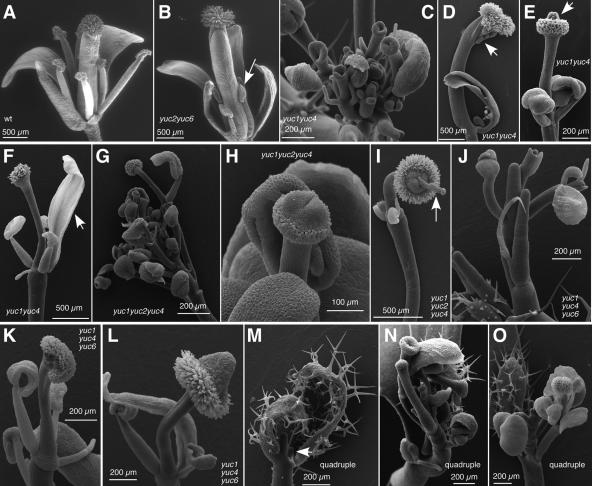Figure 3.
The roles of the YUC genes in floral organ patterning. (A) A wild-type flower with some sepals and petals removed. (B) A flower of yuc2yuc6 with some sepals and petals removed. The arrow points to the short stamens. (C–F) Flower-like structures of yuc1yuc4. The inflorescence apex of yuc1yuc4 is shown in C, and typical yuc1yuc4 flowers are displayed in D–F. The arrow in D indicates the ovule-like structure, the arrow in E points to the meristem-like protrusion, and the arrow in F refers to a petal-like organ. (G–I) Flowers of yuc1yuc2yuc4. The inflorescence apex is shown in G and typical flowers are shown in H and I. In I, a gynoecium-like structure grew out of the top of another gynoecium. (J–L) Various floral structures of yuc1yuc4yuc6. (M–O) Inflorescence apex of yuc1yuc2yuc4yuc6. Note the cylinder structure in M.

